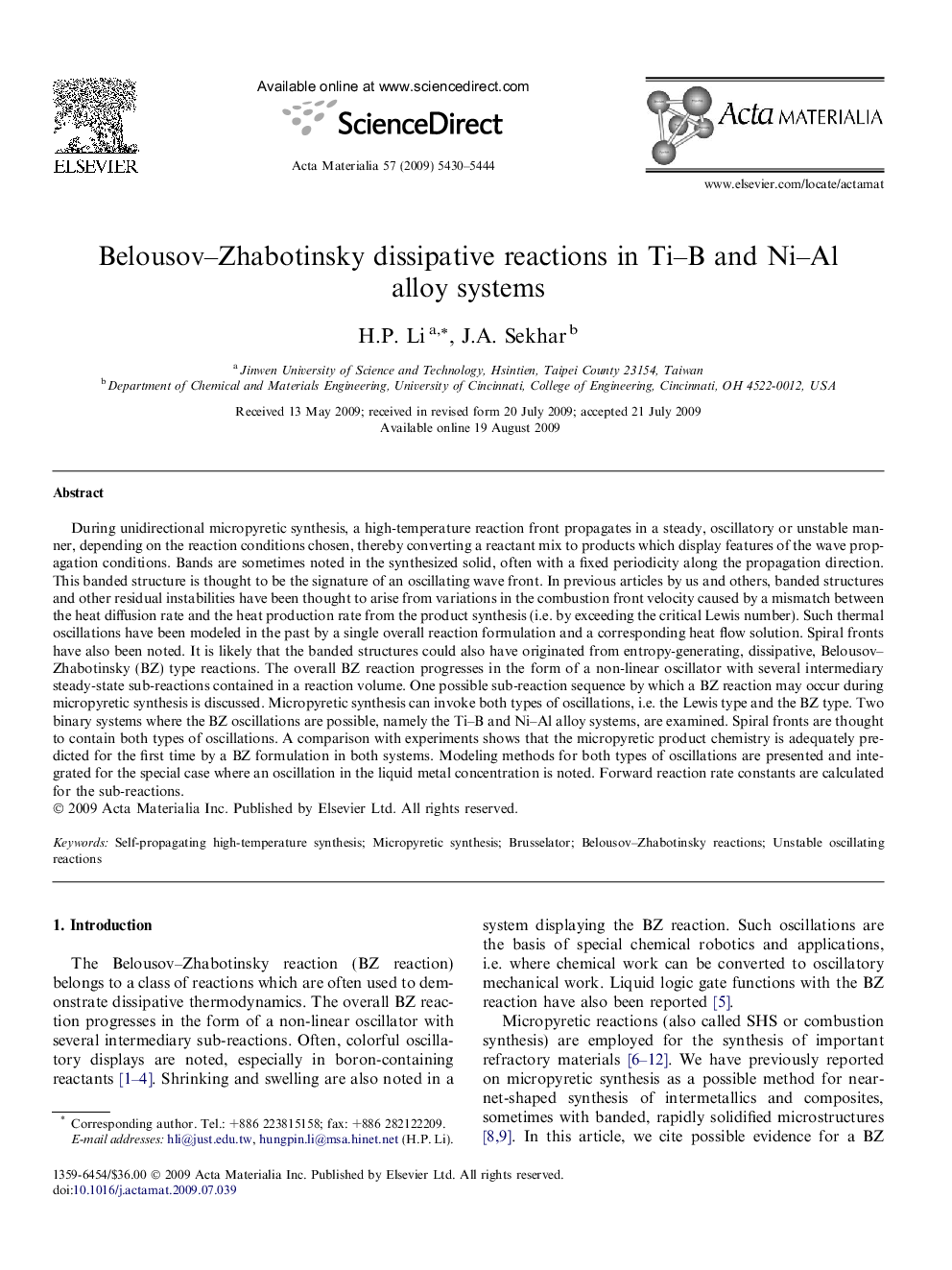| کد مقاله | کد نشریه | سال انتشار | مقاله انگلیسی | نسخه تمام متن |
|---|---|---|---|---|
| 1448094 | 988664 | 2009 | 15 صفحه PDF | دانلود رایگان |

During unidirectional micropyretic synthesis, a high-temperature reaction front propagates in a steady, oscillatory or unstable manner, depending on the reaction conditions chosen, thereby converting a reactant mix to products which display features of the wave propagation conditions. Bands are sometimes noted in the synthesized solid, often with a fixed periodicity along the propagation direction. This banded structure is thought to be the signature of an oscillating wave front. In previous articles by us and others, banded structures and other residual instabilities have been thought to arise from variations in the combustion front velocity caused by a mismatch between the heat diffusion rate and the heat production rate from the product synthesis (i.e. by exceeding the critical Lewis number). Such thermal oscillations have been modeled in the past by a single overall reaction formulation and a corresponding heat flow solution. Spiral fronts have also been noted. It is likely that the banded structures could also have originated from entropy-generating, dissipative, Belousov–Zhabotinsky (BZ) type reactions. The overall BZ reaction progresses in the form of a non-linear oscillator with several intermediary steady-state sub-reactions contained in a reaction volume. One possible sub-reaction sequence by which a BZ reaction may occur during micropyretic synthesis is discussed. Micropyretic synthesis can invoke both types of oscillations, i.e. the Lewis type and the BZ type. Two binary systems where the BZ oscillations are possible, namely the Ti–B and Ni–Al alloy systems, are examined. Spiral fronts are thought to contain both types of oscillations. A comparison with experiments shows that the micropyretic product chemistry is adequately predicted for the first time by a BZ formulation in both systems. Modeling methods for both types of oscillations are presented and integrated for the special case where an oscillation in the liquid metal concentration is noted. Forward reaction rate constants are calculated for the sub-reactions.
Journal: Acta Materialia - Volume 57, Issue 18, October 2009, Pages 5430–5444